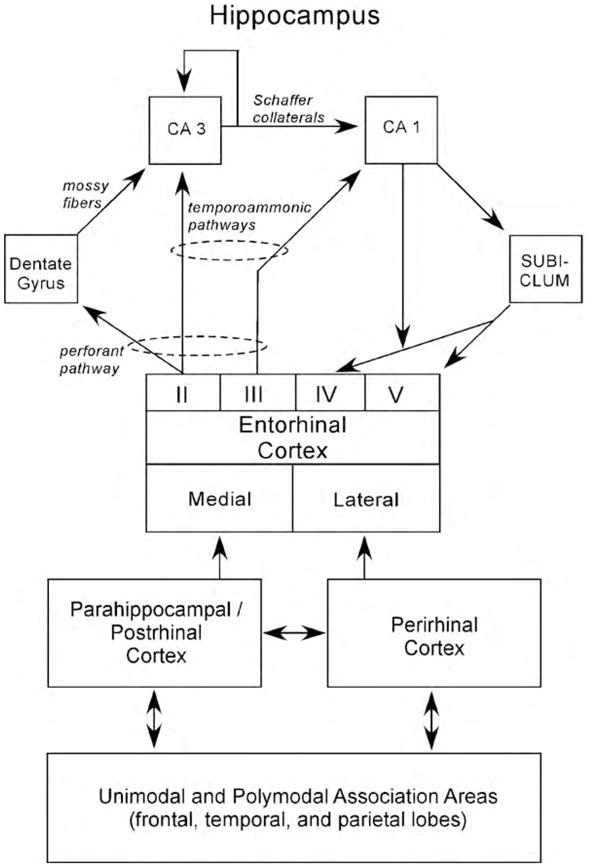Fig. 2.

A schematic view of the medial temporal lobe memory system: The hippocampus, defined here as the dentate gyrus (DG), CA3, and CA1, is anatomically situated to receive highly processed information from widespread neocortical regions through three temporal cortical areas: the entorhinal, perirhinal, and parahippocampal cortices (in the rat the postrhinal cortex is used in place of the parahippocampal cortex), and through other direct projections from extra-temporal areas. The main pathway for the transmission of sensory information to the hippocampus is the entorhinal cortex. Layer II of this structure provides the major input to the hippocampus. This unidirectional projection, forming part of the perforant pathway, provides a substantial input to the DG, which, in turn, provides the major input to CA3 via the mossy fiber projection. There is also a smaller unidirectional projection to CA3 from layer II of the entorhinal cortex. CA3 provides the major input to CA1 via the Schaffer collateral/commissural pathway, but there is a substantial recurrent associational projection back to the CA3 field. CA1 also receives a direct temporoammonic projection from layer III of the entorhinal cortex (as does the subiculum, not shown). Both Schaffer collateral and temporoammonic projections to CA1 are unidirectional. CA1 primarily projects to the subiculum, but also sends a projection to entorhinal cortex layer V. The subiculum sends a prominent projection primarily to the entorhinal cortex layers IV and V (see Witter & Amaral, 2004 for review). The figure shows a simplified view of the way in which information enters the hippocampus from the superficial layers of the entorhinal cortex and then flows in a largely unidirectional, feed-forward, clockwise direction to ultimately return predominantly to the deep layers of entorhinal cortex. The perirhinal and parahippocampal/postrhinal cortex account for a substantial portion of the cortical input to the entorhinal cortex. The parahippocampal/postrhinal cortex preferentially projects to medial entorhinal cortex, and the perirhinal cortex preferentially projects to the lateral entorhinal cortex. These structures in turn receive projections from unimodal and polymodal areas in the frontal, temporal, and parietal lobes.
